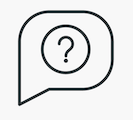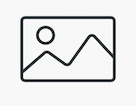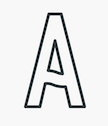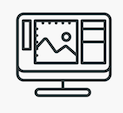I am creative and appreciate beautiful things but I am not a graphic designer. The point of this article is not to teach you how to be a designer. I wouldn’t dare to presume. However, I firmly believe that marketing research needs great graphic design like a cupcake needs frosting. Great design pulls in your audience, helps you clearly communicate the story and makes the content more engaging.
To that end, I often do work with professional graphic designers to help take my decks and reports to the next level. But I don’t always have the time or the budget to do that or frankly, sometimes I just need a deliverable that’s “good enough.” Over the years as an independent insights consultant I’ve discovered a handful of resources that can make marketing my own business and creating proposals and reports for others more beautiful, more interesting and just overall more professional-looking.
 Icons
Icons
Something I’ve picked up from working with actual designers is that a few, well-placed icons in a consistent style and color palette can really add that final level
of polish to a report or other deliverable. I use The Noun Project and find it valuable enough to have actually ponied up for a paid subscription (very
reasonable at $40/year currently).
Sometimes icons are purely decorative but they can work harder too. For example, if you use specific icons consistently throughout a report to represent particular consumer groups, those icons can stand in for text in complicated charts or graphics to make them easily readable.
 Stock photography
Stock photography
There is a lot of terrible stock photography out there. To avoid it, you basically have two choices. One, you can pay for a subscription to a high-quality stock image service like Adobe Stock or Shutterstock. That may be a good option if you need lots of images for commercial use but it’s not cheap.
Alternately, if you just need images occasionally and they don’t have to be super-specific, there are a few great free stock photo sources. Two that I frequently use are Unsplash, which has a beautiful, searchable Web site; and Death to Stock, which sends free unique photos out in themed packs via e-mail. Be sure to credit the creators appropriately (each site has its own guidelines).
 Fonts
Fonts
Here’s what I know about special fonts: not using them can make materials look generic but using them inappropriately makes you look like a complete idiot. I prefer to risk erring on the generic side, especially since I’m typically dealing with client-facing deliverables (vs. creative marketing output). That said, if you’re feeling brave you can find lots of free and unique fonts on Dafont.
Just remember that if you’re using a non-standard font, there’s a good chance it won’t look the same on someone else’s computer in a document (unless they have also downloaded the same font). When it doubt, send the document as a PDF to preserve fonts.
 Infographics
Infographics
Here’s an area I would love to grow my own design expertise: creating infographics! There’s a reason information presented in this format gets shared so much online – if done right, it’s a fun and engaging way to communicate data.
If I decide I simply must create my own infographic, the best option I’ve found is Venngage. The site has a basic selection of free infographic templates that you can play around with online to create a custom version. If you love it, there are also paid subscriptions that give access to all the premium templates as well ($19/month for an individual).
 Photo editing
Photo editing
If you are working with stock photography (or your own), you’ll likely need photo editing software at some point. If you don’t have the need level or expertise for an Adobe Creative Cloud subscription (e.g., Adobe Illustrator, Adobe Photoshop, etc.), you can stay in the Adobe family with Photoshop Elements (one-time purchase), which is a more basic and user-friendly version of Photoshop.
There are a few good free online photo editing sites as well. I recommend Fotor or Pixlr (the latter also has links on its homepage to free vector editor, fonts and graphics sites). One of my most common image-editing needs is just to reduce the file size of an image, particularly for use in e-mail. The interface could use a little design help itself but the free Image Optimizer site has always done the trick for me.
If you work in marketing research (or marketing or any related disciplines), I highly recommend that you find an awesome freelance graphic designer or design firm to partner with if you don’t work for a company with those resources in-house. Working with designers and seeing their creations is probably the best way to build your own eye for design. And for everything else, I hope these design tools and resources can help fill the gaps!
